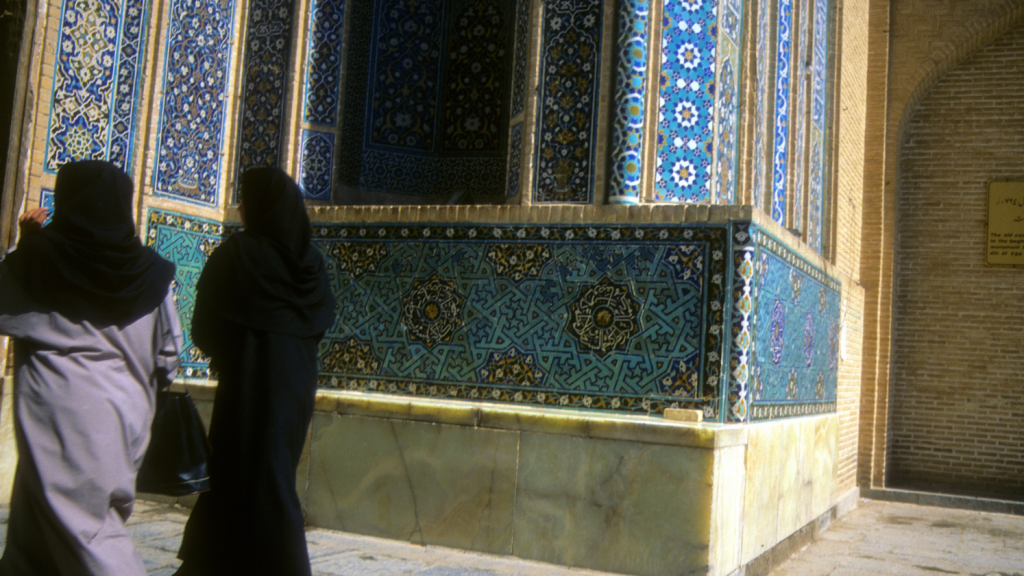While there is a broad scope of research into Islamophobia in the UK, Michael Dhanoya looks in more detail at the recent waves of Shiaphobia and the intersections of race, gender, and religious history impacting online language.

This summer has seen a sharp increase or ‘spike’ in the expression of anti-Muslim hate evident online. While similar spikes have been occurring since the 9/11 attacks more than two decades ago, this one was different. Rather than being triggered by a terrorist attack or similar, the recent spike was in response to the Islamic festival of ʿĀshūrāʾ. So too was it different in that the spike in hate wasn’t directed towards all Muslims, but towards Shīʿa Muslims specifically. Rather than being Islamophobia – hate directed towards Muslims by non-Muslims – this was Shiaphobia – hate directed towards Shīʿa Muslims by Sunnī Muslims.
As a new and relatively unknown phenomenon, this article not only attempts to better understand exactly what Shiaphobia is, but so too what causes it and how it’s been expressed online in recent months. Centuries in the making, given the scant attention afforded to Shiaphobia within Muslim communities as much as in wider public and political spaces, this article also puts forward some preliminary ideas that might help increase awareness and importantly, bring about change.
The Sectarian Divide
The significance of commemorating ʿĀshūrāʾ is intertwined with the Sunnī-Shīʿa schism, which can be traced back to the death of the Prophet Muḥammad in 632 CE. The rift emerged over who would succeed Muḥammad as ruler of the Arabian Peninsula, much of which was under Muslim control. Some Muslims believe that before his passing, Muḥammad appointed ʿAlī ibn Abī Ṭālib (his cousin and son-in-law) as his successor, while others believe he left it to the Muslim community to decide. Muḥammad was eventually succeeded by Abū Bakr, ʿUmar ibn al-Khaṭṭāb and ʿUthmān ibn ʿAffān in turn, before ʿAlī became ruler. The Muslims who accepted the leadership of all four men after Muḥammad became the Sunnī Muslims (people of the Sunnah), while those who recognised ʿAlī alone became the Shīʿa Muslims (partisans of ʿAlī).
This period was marked by turmoil. After ʿAlī’s assassination, the leadership passed to Muʿāwiya ibn Abī Sufyān who shortly before his death appointed his son Yazīd as his successor. Leading a revolt against Yazīd was Ḥusayn, ʿAlī’s son. However while travelling to Kufa, Ḥusayn and his followers were intercepted by Yazīd’s army at Karbalāʾ. Being subsequently killed on the tenth day of the Islamic month of Muḥarram in 680 CE, ʿĀshūrāʾ marks the death of Ḥusayn. Before this incident, Sunnī and Shīʿa Muslims differed solely on the issue of leadership. Ḥusayn’s death stimulated the Shīʿa to develop into an Islamic sect with a distinct theology and set of religious practices.
A Shiaphobic Backlash
The spike in online hate triggered by ʿĀshūrāʾ was evident across numerous social media platforms. Targeting publicly identifiable Shīʿa Muslims, much of the hate centred on Shīʿa religious beliefs and practices and the widely held view within Sunnī ʿIslām that Shīʿa Muslims are non-believers. Regarding the latter, this found form in Shīʿa Muslims being labelled as ‘Rāfiḍah’ (Rejectors), in reference to the Shīʿa rejection of the first three leaders of the Muslim community after Muḥammad’s death. While theologically and historically accurate, it is used pejoratively in the contemporary setting: a colloquialism for the view that the Shīʿa are disbelievers.
So too were other religious and theological differences referred to. Notably, reference was made to Shīʿa Muslims praying to Allāh in Ḥusayn’s name on ʿĀshūrāʾ (with Ḥusayn considered a spiritual intercessor between the worshipper and Allāh). Many Sunnī Muslims deem this practice an unforgivable sin, worthy of excommunication. Online, this sentiment found form in comments referring to the Shīʿa as ‘Grave Worshippers’ and when referring to them as ‘Ahl al-Iblīs’ (the followers of Satan), ‘Kuffār’ (disbelievers), ‘Zanādiqa’ (heretics) and ‘Murtaddūn’ (apostates).
While some Shīʿa women were targeted with explicit misogyny – for instance, referred to as ‘Shīʿa slut’ or ‘Rāfiḍah whore’ – they were also targeted on the basis of religious and theological differences. Much of this made specific reference to ‘nikāḥ al-mutʿah’ (pleasure marriage), a form of marriage permitted in Twelver Shīʿa ʿIslām that allows a man and a woman to marry for a specific period of time in order to engage in sexual relations. A practice often criticised as ‘religious prostitution’, such references sought to sexually objectify Shīʿa women.
Racial and national difference also informed expressions of online Shiaphobia. This was most evident where victims made explicit reference to Iran (where Shīʿa Islam is the state religion), such as posting images of Shīʿa pilgrimage sites in the country. Doing so resulted in many being called ‘Majus’. A term referring to Zoroastrians, since the Iran-Iraq war in the 1980s, it has been used in increasingly insulting ways to refer to Iran’s pre-Islamic history, thereby implicitly deeming Iranians to be non-Muslims. The catalyst for this was Saddam Hussein who, as the then President of Iraq, used the term in an official capacity to denigrate Iranians. Today, ‘Majus’ is a racial insult akin to the ‘N’ or ‘P’ words in Western parlance. Shīʿa Muslims in general were also dehumanised, being routinely referred to as ‘Snakes’, ‘Cockroaches’, and ‘Dogs of Jahannam (Hell)’.
Responding to Shiaphobia
While it would be easy to dismiss the spike in Shiaphobia that followed ʿĀshūrāʾ as being anomalous, ongoing research being undertaken at the University of Leicester shows that there have been other similar spikes in recent months. In the UK this year, this was evident following the festival of Eid al-Ghadīr (an Islamic holiday celebrated by Shīʿa Muslims but not Sunnī Muslims). Similar expressions also ensued immediately after the attempted murder of the author Salman Rushdie and the killing of four Shīʿa Muslims in Albuquerque in the United States.
Despite the fact that Shiaphobia appears to be on the rise, it has been and indeed remains largely invisible in public and political spaces. While this could be due to manifestations of Shiaphobia being relatively new, it could also be due to the fact that the majority of British Muslims adhere to Sunnī ʿIslām. Accordingly, Sunnī Muslims are afforded hegemonic power over the Islamic space in Britain and are able to dictate the narrative presented to the British non-Muslim population regarding who British Muslims are and which socio-political issues are important to them. Consequently, Shiaphobia is unlikely to reach the public consciousness, as the issue can be framed by the public faces of British (i.e. Sunnī) Islam as being a manifestation of sectarianism, which Sunnī and Shīʿa Muslims engage in equally. Shiaphobia will continue to be ignored as long as British Shīʿa Muslims are marginalised. It is high time that Shīʿa Muslims are afforded a platform via which they can represent themselves and highlight the issues pertinent to them. Perhaps then, the issue of Shiaphobia will garner wider public attention and discussion.
The reporting and recording of Shiaphobia also contributes to its current invisibility. While research indicates that all forms of hate crime are under-reported, specifically, Shiaphobic incidents reported to the police are recorded as religiously-motivated – thereby seen as being Islamophobic – rather than as intra-religiously-motivated – thereby Shiaphobic. Thus, such incidents are rendered invisible in official hate crime statistics. Without the police recording system evolving to differentiate between sectarian hate crime and generic religious hate crime, Shiaphobia will remain under the radar.





